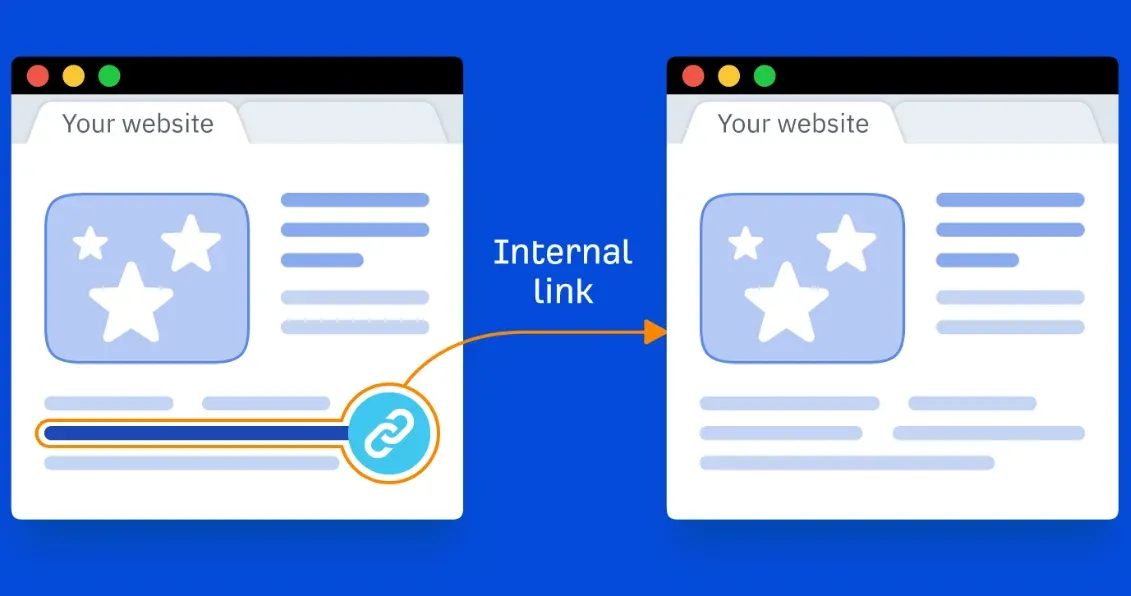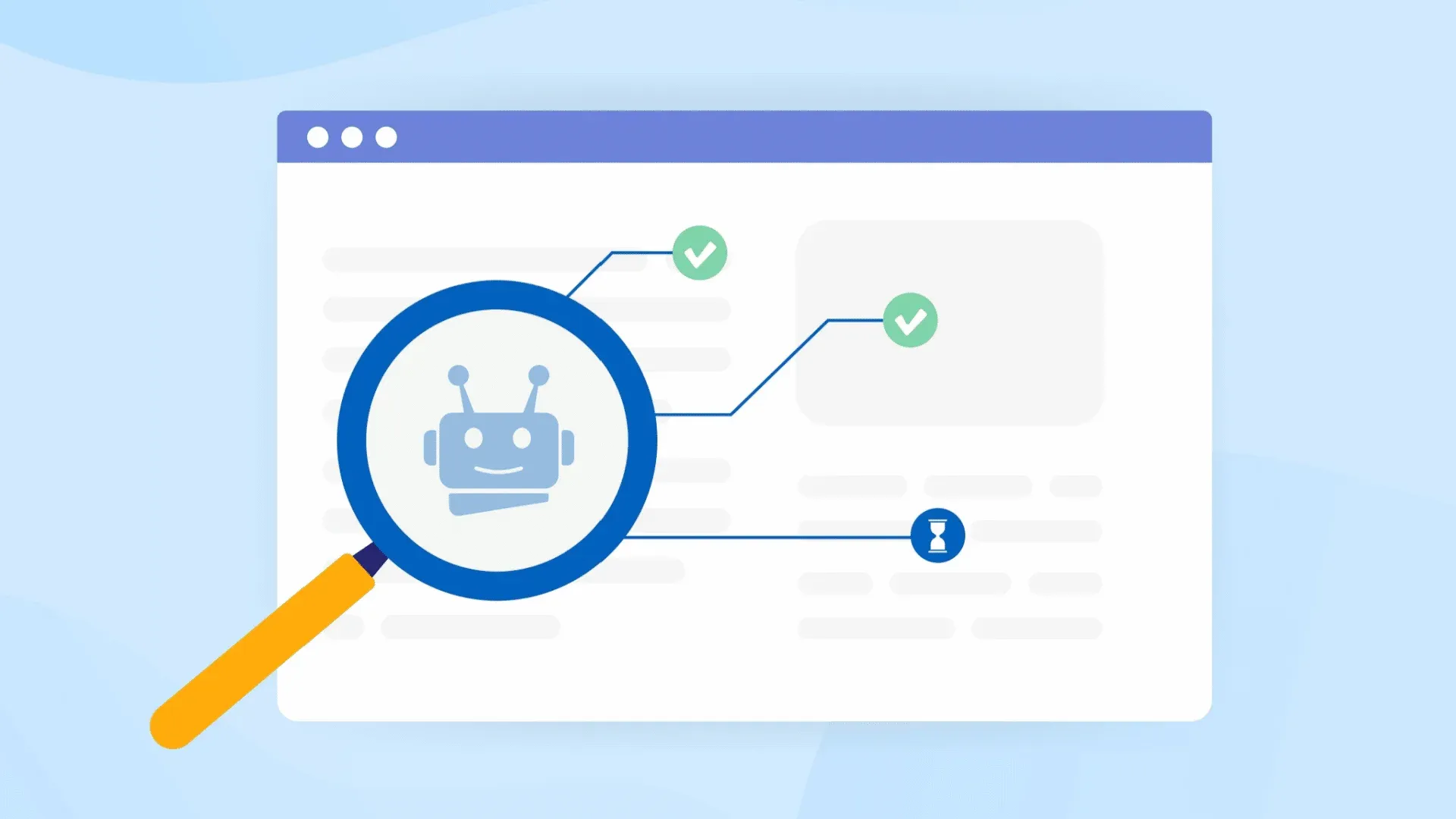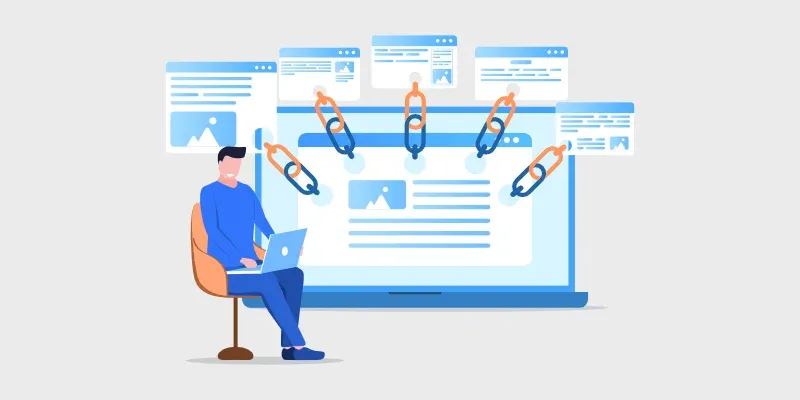Unlocking Success: Must-Know Metrics In Internal Link Building Reporting

Creating an SEO-friendly internal linking strategy? The key is unlocking crucial metrics' power. As your website's secret decoder ring, they disclose its connections' language. Master them and see your pages' search engine rankings, user engagement, and site authority rise.
Are you ready to unlock the full potential of your internal links? From click-through rates to anchor text analysis, we'll help you understand how to master SEO stats with comprehensive link building reporting. Success awaits with every click!
Why Link Building Is Important
Link building is crucial to SEO, affecting a website's exposure and credibility. This strategy is based on how search engines use links as beacons to navigate the huge sea of online content. Let's explore its significance:
- The Key to Link Building: Link building is a vote of confidence and a sign of a site's relevance and authority. Google weighs backlinks as endorsements in its sophisticated algorithmic mix that determines search rankings. Simple: if credible sites connect to your information, it's likely worthwhile and trustworthy.
- A Ranking Correlation: Effective link building improves search engine ranks. Backlink-rich websites frequently score higher in search results. Like a popularity contest, the more credible linking websites endorse your material, the higher it ranks in the digital hierarchy.
- Making Domain Authority: Domain authority, your website's digital reputation, is closely connected to backlink quality and quantity. High-quality links boost domain authority. This affects page ranks and your internet credibility.
Essential Metrics for Link-Building Progress

Beyond having a general idea of what link building is, it is very important to know why link building is important and the metrics that are used to measure how well it works.
Let's look at some key measures and explain what they do to help you improve your link-building strategies.
Organic Traffic Impact
Internal links have a big effect on organic traffic in the busy world of digital landscapes. Internal linking techniques that work help users move around a website more easily, which improves the user experience and, as a result, increases organic traffic.
Here's where tools come in. A good tool gives you an analytical report to measure and improve internal links so that they show up higher in organic search results.
Total Internal Links
In the confusing world of SEO, keeping an eye on all the internal links is like looking at a website's building plan. Linkbot is a lighthouse in this exploration; it shows you tools and information to figure out how internal links are distributed and how healthy they are. This shows you your digital domain's structure and how people can navigate it.
Page Authority of Linking Pages
All of the links in a document carry authority, as do the power and importance of the other links within the document. The key to this relationship is the page authority of the pages that link to this one. With Linkbot's many tools, users can keep an eye on and analyze the page authority of pages that link to other pages, which helps with smart internal link optimization.
Anchor Text Distribution
An important part of SEO is anchor texts, which work as melodic descriptions that lead users through the digital composition. Diversifying anchor texts is not just an idea; it's a must. Linkbot's easy-to-use features help users create a harmonious and effective anchor text strategy.
Click-Through Rate (CTR) Enhancement
The digital dance of clicks is very important because it affects user engagement and, in turn, search engine results. As a marketer, you must know all about the different factors that affect click-through rates for internal links and give users information and suggestions on how to click on CTR through smart internal linking.
Bounce Rate
The dance between relevance and user involvement can be seen in the web of links and bounce rates. Higher bounce rates can be caused by internal links that aren't optimized well. Here comes Linkbot, which sheds light on bounce rates linked to internal linking and gives advice on how to improve strategies and lower bounce rates.
Best SEO Link Building Strategy

Building SEO links is a lot like putting together a symphony: each note has a place and a purpose. To get good at this, you need to know how to make the best SEO link building strategy.
Comprehensive Keyword Research
Keyword study helps websites reach their ideal visitors and is the basis of a strong link-building plan. It's very important to target keywords that fit your business goals and the intent of your audience. Long-tail keywords narrow the focus and make sure that each link has a purpose in the way people look.
Content Quality and Relevance
When it comes to building links, "content is king" really does apply. How well you get links depends on the quality and usefulness of the content. Key is content that does two things: engages and matches search purpose. This method naturally gets links and meets users' information needs, which raises the value of links.
Outreach and Relationship Building
Building relationships and reaching out to new people are what make link acquisition happen. It is necessary to use a sophisticated outreach strategy and related websites. This dance choreographs tips for building relationships and trustworthy links. Strategic partnerships give you more credibility and make your business better.
Diversified Link Building Tactics
Having a wide range of links is good for SEO. Different ways of making links, such as guest posting, working with influencers, and promoting on social media, help people be more resilient. As search engine algorithms change, it's important to be able to adjust. A well-rounded and long-lasting link-building strategy needs to keep an eye on changes in the industry and make changes to how it works.
Data Analysis and Continuous Improvement
Once a plan for making links has been put into action, data analysis and constant improvement can begin. Metrics, which are like applause meters, measure how well each linked link works. Analytics technologies turn making decisions based on data into a loop of continuous optimization. An insight-driven approach will work in the ever-changing world of SEO, emphasizing why links for SEO are important for sustained success.
Using Linkbot For Internal Link Building Metrics Analysis
SEO changes all the time, so it takes more than gut feelings to get good at building internal links. A good study of metrics is also important for getting useful information. Here's Linkbot, a unique tool that will show you how to make your internal links better.
Let's look at what it can do through the lens of steps for making internal links.
Dashboard Navigation And Overview
Linkbot's homepage is simple to use and gives you access to all of its data.
It is more than just a platform; it is also a map that helps people get around in networks with lots of difficult links. Because the design is simple, it is easy to use and get around.
Users can easily access and find internal link metrics in this digital world. These metrics show a visual feast of reports that give users a quick look at how well their internal links are doing.
Real-Time Monitoring Features
On the web, time is very important because things change quickly. People who use Linkbot can see how their internal link structure changes and beats in real time.
Linkbot is like a guardian that keeps an eye on your internal links and sends you tips and messages when something changes or goes wrong. As you work on metrics, having real-time views can be very helpful.
Linkbot is the way to get the best SEO link building strategy tips in real-time.
Customized Reporting
The way you build internal links is different for each site, and Linkbot knows this. It's very good at custom reporting, which means it can find insights based on metrics that are unique to each person and their needs and goals.
Because of this, you can set up regular reporting systems that will always let you know how well your internal links are working.
Linkbot's personalized reporting is like a lighthouse in the field of data, where being correct is very important.
Page-Level Analysis
It's important to know how influence is distributed on different pages if you want to improve internal links. This puzzle is solved by Linkbot, which tells users how important pages are that lead to other sites.
Users can find out which pages have the most effect on the environment of internal links. This information helps them make smart choices about how to make their site better. Linkbot doesn't just tell people things; it also sets them up with the means to use what they learn.
Remediation Suggestions
Even plans that have been carefully thought out can go wrong. Linkbot is like a responsible parent; it looks for ways to improve the way internal links are set up.
It doesn't just warn; its ideas are ways to make things better. Linkbot can help users follow best practices, which can turn problems into chances to learn how to make a better plan for building internal links.
Link Building Tips For Off Page Optimization
Off page optimization is an important part of SEO, and good links from outside the site can help it rank higher. Use these link building tips to improve your off-page link-building:
1. Strategic Outreach: Connect with thought leaders, industry experts, and other companies in the same field to make important connections. Backlinks are useful when people work together.
2. Use collaborations with influencers: Work with influencers in your field. Work together on material, interviews, or other projects. This makes people trust the company and often leads to authoritative external links.
3. Use a variety of link sources to build a strong link profile. Get links from a lot of different places. A natural link portfolio is made up of good directories, forums, and linking websites that are specific to your business.
4. Organic Growth Techniques: To slowly build up off-page links, rely on long-term methods. Make content that people will want to share and that will naturally get linked to. Stay away from spam and short-cuts that might bring more people to your website but hurt its image.
5. Watch and Change: Keep an eye on how off-page links are doing on a regular basis. Figure out which tactics work and make changes to your own. To improve link-building, keep up with changes in your business, especially when considering effective links for SEO strategies.
FAQs About Internal Link Building
How Can Website Owners Adapt Their Link Building Strategies To Cope With Search Engine Algorithm Changes?
To adapt to algorithmic changes, website owners should stay informed about updates, focus on high-quality content, diversify link sources, and avoid black-hat practices. Regular monitoring of link performance metrics, as provided by tools like Linkbot, aids in adjusting strategies based on algorithmic shifts.
Is There An Optimal Frequency For Updating Internal Links On A Website?
The frequency of updating internal links can vary, but it's recommended to conduct regular audits and updates to ensure relevance and alignment with current content. Link building tips can be integrated into your strategy to enhance the effectiveness of Linkbot's real-time monitoring features and alerts, assisting in maintaining an up-to-date internal link structure.
How Does Linkbot Help In Identifying And Addressing Issues With Internal Links?
Linkbot identifies potential issues such as broken links, redirects, or missing anchor texts. It offers remediation suggestions and best practices recommendations, guiding users on how to address these issues and optimize their internal links for SEO performance.
